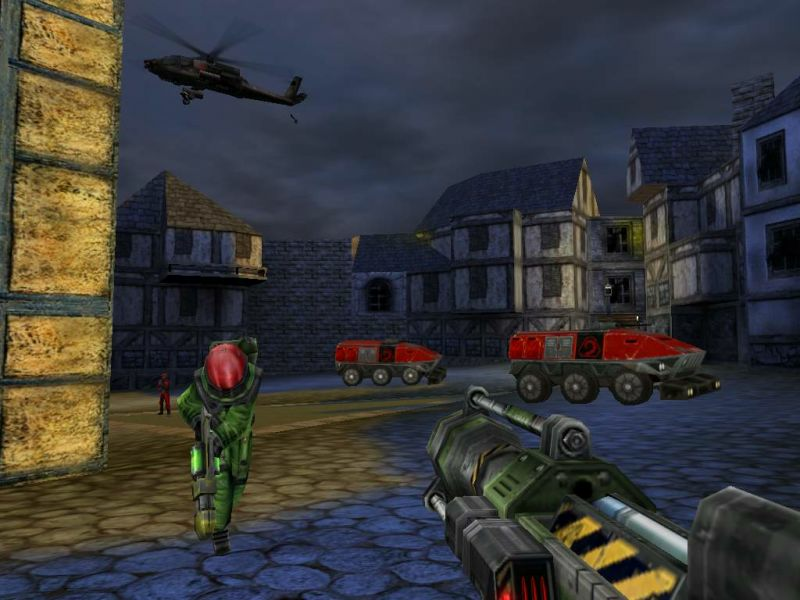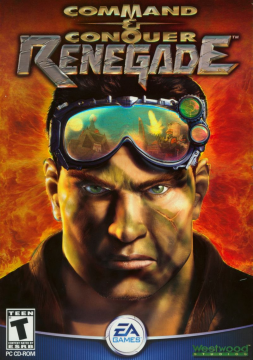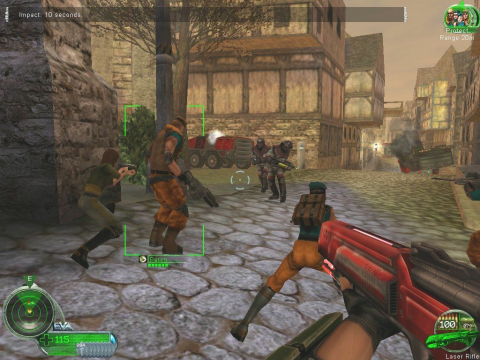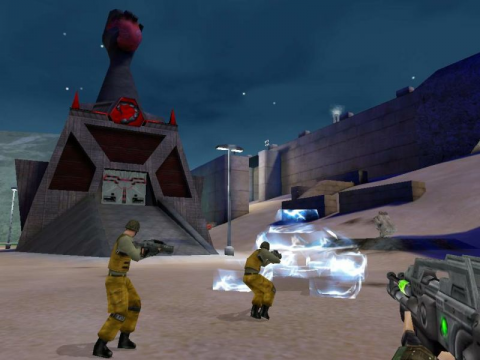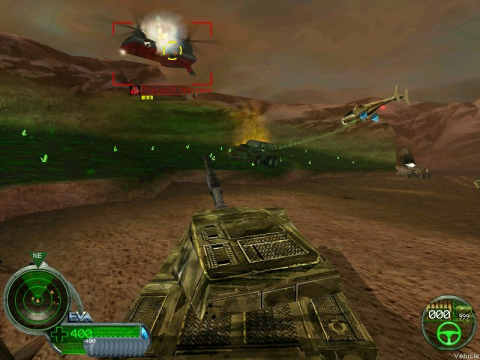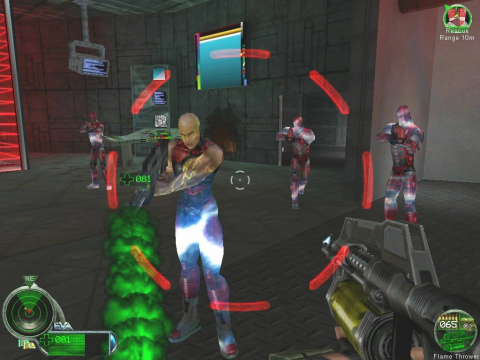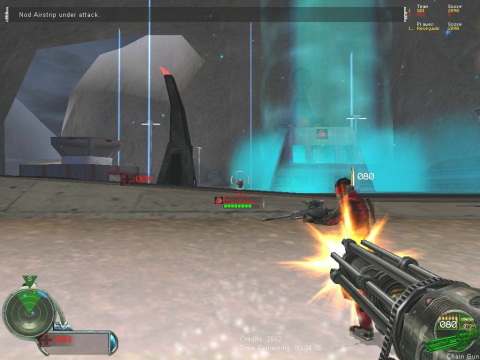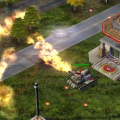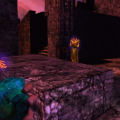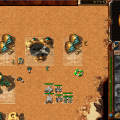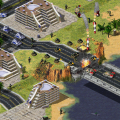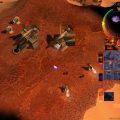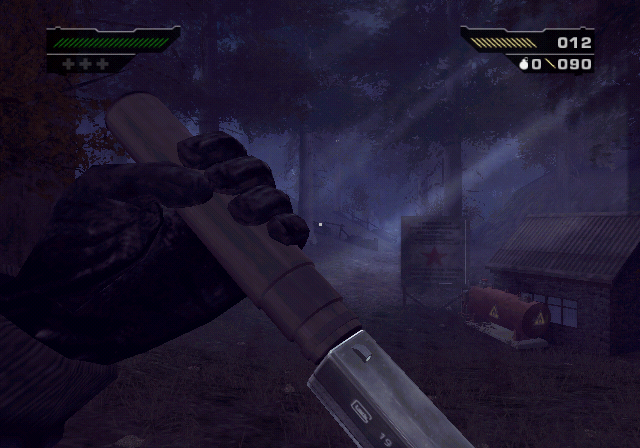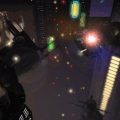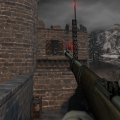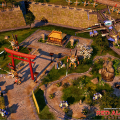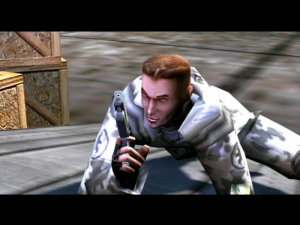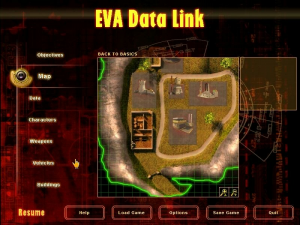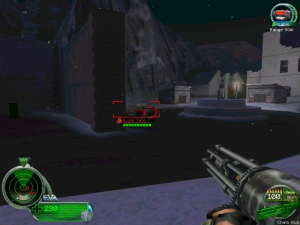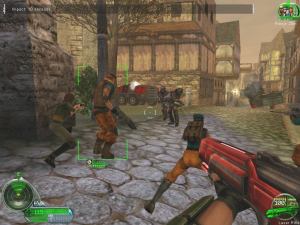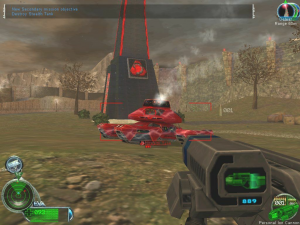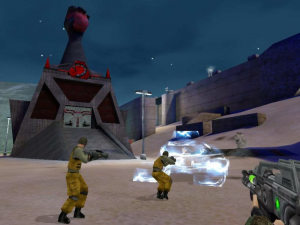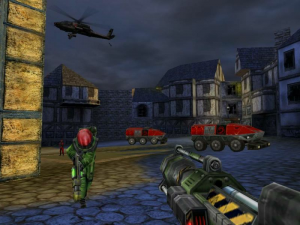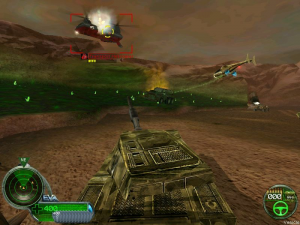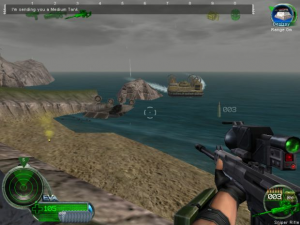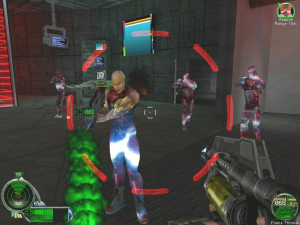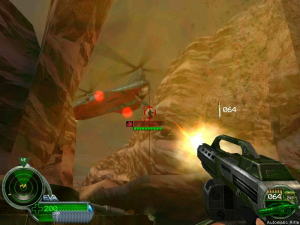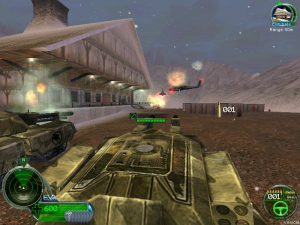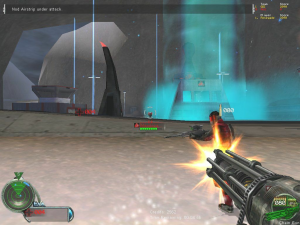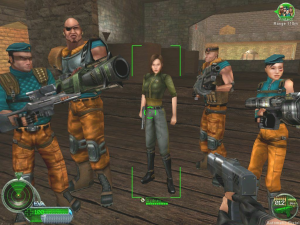- Command and Conquer
- Command and Conquer: Red Alert
- Command and Conquer: Tiberian Sun
- Command and Conquer: Renegade
- Command and Conquer: Red Alert 2
- Command and Conquer Generals
- Command and Conquer 3: Tiberium Wars
- Command and Conquer: Red Alert 3
- Command and Conquer 4: Tiberian Twilight
- Command & Conquer: Generals: Combat Cards
- Command & Conquer 3: Tiberium Wars (Mobile)
- Command & Conquer: Red Alert Mobile
- Command & Conquer: Red Alert (iOS)
- Command & Conquer 4: Tiberian Twilight (Mobile)
- Command & Conquer: Tiberium Alliances
- Red Alert OL
The classic Command and Conquer franchise have been associated with real time strategy ever since Tiberian Dawn came out in 1995. Almost from the very beginning, however, Westwood Studios had plans to expand the saga into other niches and genres. But while this infamously backfired with the launch and reception of the online multiplayer Sole Survivor, it wouldn’t be the last time the original developers toyed with making a different kind of offshoot.
As early as July 1997 (around the same time that Sole Survivor was being worked on), Westwood was experimenting on 3D models and environments for a PlayStation 1 project titled Command and Conquer – Commando. Little else is known about that abandoned project, save for a “Pre-Milestone 1” tech demo discovered and publicly released in 2014; said demo contained three completed models – a test model, the titular Commando and a fully-rendered Nod Flame Tank – a player test, terrain test and a “Jogging Around Atlanta” level. Although a deceptively small and forgotten piece of trivia at a glance, the concept of a three-dimensional non-RTS game set in the Tiberium universe didn’t fade away. Instead, the Commando idea became the seed for what came to be known as Command and Conquer: Renegade. After multiple delays (with an early trailer released in 2000), it finally reached shelves on February 26, 2002 for PC. Critics and long-time fans alike were taken aback by how this first-person/third-person shooter spinoff seemed out of left field compared to entries that came before and after it. While it wasn’t able to fully take the genre by storm when it was launched, its legacy and especially its multiplayer continue to endure long after the hype had died down.
Rather than continuing on from where Tiberian Sun or Firestorm left off, Renegade instead revisits the First Tiberium War seen in the very first game. Right in the thick of the action is Col. Nick “Havoc” Parker, a gung-ho commando working for the Global Defense Initiative. A former member of the notorious special operations outfit “Dead-6,” he’s not one to follow orders (to General Adam Locke’s chagrin), but nonetheless is still known for getting the job done. But on one mission to track down a hidden Nod base, he stumbles upon a piece of intel involving the elusive Black Hand. A chain of events is set off, leading to him being tasked, alongside his former “Dead-6” teammates, with rescuing top experts that had gone mission (including Dr. Ignatio Mobius and his daughter). What should have been a straightforward if dangerous assignment, however, soon turns in a frantic race against time to stop the Brotherhood and Kane from unleashing the “Project ReGenesis” upon the world.
The gameplay is, at a glance, a massive if not jarring departure from what gamers would expect. Whether in first-person or third-person (which can be switched on the fly), Renegade is an unapologetic arcade shooter and plays much like others out at the time, complete with ammo and armor packs that can be picked up. There are up to 18 weapons at your disposal – these can range from conventional pistols and automatic rifles to miniguns, rocket launchers and experimental weapons (like laser rifles) – most of which can be collected in single-player. Meanwhile, though you could only aim down sights for certain guns (such as sniper rifles), targeting enemies in range is generally as straightforward as firing at their general direction.
A closer look at the mechanics, however, reveals a number of unique touches are recognizably Command and Conquer. The weapon damage and armor system are functionally similar to the broad rock-paper-scissor dynamics in the RTS games; a Raptor automatic rifle can easily handle basic enemies, for instance, but is less than useful when dealing with tanks or heavy infantry. On top of how each single character and destructible structure have their own respective hitpoints – much like the main entries, foes and friendlies alike have these visibly displayed (similarly to the originals) when pointed at – the myriad vehicles seen in-game can also be taken and driven/piloted, including those from the enemy; while by no means the first one to have such a feature, it’s reminiscent of Codemasters’ Operation Flashpoint and notably predates similar mechanics in DICE’s Battlefield 1942 by only a few months. These touches go far in giving the action a distinct flavor that manages to evoke classics like Tiberian Dawn despite superficially being distant from them.
The single-player campaign (comprised of 12 missions) tries to capture the spirit of the games, which manages to succeed to a point. Playing as Havoc, you’re thrown right into the First Tiberium War as you stop Kane’s insidious scheme, culminating in action movie-style climax in Egypt. Along the way, you’re treated to a variety of environments and game styles (ranging from stealth sections to full-blown setpiece sequences), more often than not in the same mission. One moment, your character’s going behind enemy lines in a Nod-occupied settlement, the next there’s a vehicular segment where you’re blasting every single enemy; a side-effect of this. The objectives, meanwhile – which include rescuing scientists, hacking into enemy facilities and taking out specific targets only – are also varied enough that they don’t get stale, with optional secondary and tertiary ones that help make each level easier; on top of adding a degree of replayability, these also force you to not be complacent.
Granted, the script and plot may not be the best in the franchise, with certain one-liners, such as “I have interest in conflict” coming off too on the nose, given the otherwise serious setting. But even with the lack of FMVs of any kind as with classic titles (with CG cutscenes largely rendered with the in-game engine), the delivery is still solid enough to make you invested in the cast and what’s at stake. Whether it’s new characters like GDI Gen. Adam Locke (David Lodge), Dr. Sydney Mobius (Leigh Allyn Baker), Black Hand Gen. Gideon Raveshaw (Rodger Bumpass) and Nod mercenary Sakura (Mari Weiss), or more familiar faces like Dr. Ignatio Mobius (Rene Auberjonois) and Kane himself (Joseph Kucan), the solid quality of the performances make playing through the campaign more entertaining than they’d otherwise be. Which isn’t getting to Havoc (Wally Wingert), whose memorably no-nonsense and gung-ho attitude do grow more endearing. That you get to do many of the things seen in the cutscenes (even call in an Ion Cannon strike) further adds to the experience.
There are also more than a few references to various entries in the Tiberium universe, which give a sense of continuity. One early mission cutscene, for instance segues from what seems to be a gameplay clip taken from Tiberian Dawn into a 3D-rendered version of the same battlefield depicted in said clip. Over the course of the campaign, meanwhile, you may notice that some of the quips and one-liners coming out of not just Havoc’s mouths but others are either call-backs to the 1995 game or lifted straight from it (such as “Big tough guy!”); towards the end, you even encounter a studio heavily implied to be where Kane orchestrated much of his anti-GDI propaganda in the original’s FMVs. There are also elements foreshadowing the events of Tiberian Sun set decades later. These are particularly evident in how the Black Hand’s earlier incarnation is fleshed out, some of the results of “Project ReGenesis” being reminiscent of both the Forgotten mutants and Nod’s “Divination” plan, the introduction experimental laser guns, and even the existence of a proto-CABAL. Rather than being seemingly out of place or forced, however, these nods and touches for the most part blend well with the game’s tone, as well as the general time period depicted.
Indeed, Renegade goes far to recreate the same atmosphere and feel of the classics, with considerable success. Part of this has to do with the game also being the first one, technically speaking, to have 3D graphics right from the get-go (Generals being the first proper RTS entry to make the leap). Utilizing the “W3D” engine, which would be further refined into the SAGE engine not long after, just about everything seen back in Tiberian Dawn – from GDI’s Mammoth Tanks and ORCAs, to Nod’s Flame Tanks and Stealth Tanks – is fully rendered with significantly more detail, color and flourish that what were possible in 1995; that the vehicles available are not only controllable but even function almost as though they’re lifted wholesale from the originals (such as the aforementioned Mammoth Tanks being absurdly powerful) further adds to the immersion. This isn’t to ignore the myriad environments seen (from lush forests and deserts to landscapes slowly being transformed by Tiberium) explosions and plentiful effects on-screen (from rocket contrails to lasers), which both highlight arcade-esque spectacle and make the larger-scale carnage seen previously look even more intense; also impressive is how everything is loaded in before a match or level starts, as opposed to loading in as you play along. The soundtrack, meanwhile (done by Frank Klepacki) is suitably intense with its blend of techno and rock music, though with some ominous undertones foreshadowing the bleak conditions further down the timeline; “Stomp” in particular, one of the more memorable tracks, was originally made for Tiberian Sun but truly encapsulates the tone of the setting perfectly.
Renegade’s greatest claim to fame, though, would have to be its multiplayer, which is rather unique for its time. Known simply as “Command and Conquer Mode,” it can be best described as a mix of FPS and RTS elements. Players are split into two teams representing GDI and Nod, with at least eight people each, the victor determined by either having the most points or destroying the enemy base. While the actual matches take place in large maps that resemble a somewhat condensed version of a battlefield straight out of Tiberian Dawn. Said bases are fully functional rather than being purely cosmetic; in addition to having faction-specific structures, even come with defenses that prevent quick spawn camping, such as anti-air turrets and the Obelisk of Light. Each of the different classes available from the get-go (such as soldiers, officers, rocket infantry and engineers) have their own specific loadouts, designs and specializations mirroring their strategy game counterparts; for instance, a Nod Engineer can repair and heal friendlies with his “repair gun” while a GDI Grenadier can crush squads of soldiers with an automatic grenade launcher.
At the same time, however, you’re also encouraged to gather credits to sustain the war effort, which can be achieved through either killing foes on the field or gathering Tiberium through Harvesters, and can then be used to purchase equipment in special panels across your base. Gathering enough funds not only opens up increasingly potent vehicles but also unlocks support powers (from air support to superweapon access) and special characters, be it the likes of Havoc and the Mobius family for GDI or Raveshaw and unique heavy weapons specialists for the Brotherhood. Whether you prefer sneaking behind enemy lines though small backroom paths or charging the front defenses with tanks, the way each of the myriad classes, vehicles and support abilities interact not only strongly incentivizes teamwork to at least some degree. But it also leads to an average battle playing out more like a fast-paced RTS match than something out of Quake; base structures can even be destroyed by either blasting them with heavy firepower going inside them and destroying their “Master Control Terminals.” Factoring in smaller touches like hearing EVA announce warnings with the exact same intonation, and the resulting experience can seem as if you’re right in the middle of someone else’s strategy mission, and just like the titular Commando himself, you could make or break it. That there’s an offline “Multiplay Practice” option – the equivalent to a standard skirmish mode, albeit with basic AI opponents – servers hosted by the developers through Westwood Online were stable and generally hassle-free certainly added to the appeal.
Yet for all the major changes made and risks taken, the game has taken a few glaring flaws over the course of translating the RTS franchise into the shooter arena. The single-player campaign, as challenging as it can be at points, is handicapped by weak AI, be it among friendly NPCs and VIPs (who don’t always seem to behave as competently as they’re supposed to), or enemies with simplistic tactics. The otherwise large maps aren’t as open as they initially seem, due to myriad barriers and an increasing preference for indoor environments towards the latter parts. As a result, coupled with controls that (though straightforward enough) are somewhat stiff compared to other shooter contemporaries, the missions can sometimes feel frustratingly restrained; this is especially evident when there doesn’t seem to be enough room for vehicles to truly shine. Even setting aside the growing compatibility issues with more modern PC systems, the graphics haven’t aged gracefully. As impressive as the “W3D” engine was at the time, the models, textures and some of the visual effects come across as blocky and spotty at points; this can also make watching the cutscenes painful. Though not so significant so as to ruin your experience, it nonetheless underscores how dated the game is, and how (combined with everything else) Westwood had not really made shooters before.
More than a few games journalists expressed similar remarks in their criticisms of Renegade when it was released. Another recurring comment, meanwhile, was how it didn’t quite succeed in standing out in a market already filled with established franchises like Quake. That said, even the most mixed reviews commended the game’s multiplayer, which not only more than made up for any shortcomings but helped give it a generally favorable reception. In fact, it managed to earn accolades in GameSpy’s PC Game of the Year Awards in 2002 (under the “Wish it had been a hit” category) and was a finalist for “Best Online Gameplay of the Year” in the 2003 AIAS Interactive Achievement Awards (now known as the DICE Awards). This wasn’t exclusive to critics, however, as consumers shared the sentiment. According to EDGE Magazine in a 2006 feature on “The Top 100 PC Games of the 21st Century,” the title sold an estimated 250,000 units (or $7.8 Million in revenues) in the United States alone up until that point.
Despite the potentially alienating genre shift, long-time fans were won over by how the game stayed faithful not only to the atmosphere of the Tiberium universe. But also how Renegade’s multiplayer manages to carry over the fast-paced RTS elements characteristic of Command and Conquer while being an accessible first-person/third-person shooter. Although more recent titles like ISOTX’s Iron Grip series, Strangely Interactive’s Angels Fall First and Ammobox Studios’ Eximius: Seize the Frontline come to mind, to this day not many works have managed to capture a similar hybrid experience to what Westwood pulled off. Indeed, even for the online action alone, it made gamers long for a follow-up.
True enough, among the myriad projects left on the cutting room floor in the wake of Westwood Studios’ dissolution were plans for a proper sequel, referred to as either Battlegrounds or simply Renegade 2. Set in the Red Alert universe, two builds of the would-be title were known to have existed. The first version was drafted as an attempt to link that setting with the Tiberium timeline. Notably, it featured a “Scavenger” faction based out of the ruins of the USSR, its units and structures not only resembling jury-rigged Soviet equipment but also foreshadowing the Brotherhood. This was particularly evident in some of the 3D renders and sketches, which showed a scorpion-esque insignia and a proto-Hand of Nod made out of a ruined Communist statue; as digital Chuck Carter revealed through his website on making those renders, these were also meant to highlight how the existing engine was more than capable of handling much higher polycounts than in Renegade. The second build, meanwhile, was scrapped in favor of continuing where RA2: Yuri’s Revenge left off, involving a rogue Soviet commander (related to Premier Romanov) trying to invade the US to avenge Russia’s defeat. It was this latter draft that managed to have pre-production finished by 2003 – complete with a partially done “Marin Headlands” map, rendered models (for both Allied and Soviet units) and even a prototype of a fully destructible Soviet barracks (driven entirely by in-game physics) – with a presentation ready for final approval from EA. According to Adam Isgreen and other former Westwood developers on Petroglyph Games’ forums back in 2007, such was the enthusiasm that they even had the giant ants from Red Alert 1 back as part of a bonus level.
Instead, as Isgreen recounted, the executives formally shut down those plans in 2003 before any official announcement could be made, citing how EA “didn’t want anything to be ‘#3’” especially with Battlefield 1942 already making waves. Thus, the much-speculated follow-up never saw the light of day. Even its would-be spiritual successor, a squad-based tactical FPS titled Tiberium (done by EA Los Angeles) was cancelled in 2008. For all intents and purposes, Renegade was to be last Command and Conquer title released by the original developers before they closed their doors forever. All that remain of those efforts are myriad concept art, the partly-finished “Marin Headlands” map and a zip file the developers made (containing models and art from the cancelled project) for the fan community.
But for a proverbial curtain call, Renegade has endured far longer than even Westwood at the time would have expected. In addition to proving how dynamic the series could be while staying true to its RTS roots, its continuing presence online among gamers is another reminder of how the franchise as a whole, lives on. EA redistributing the game through various Command and Conquer compilations aside, this much to do with its multiplayer and the fans themselves. In 2003, responsibility for maintaining the official forums and the game’s online services was handed over to Blackhand Studios, a non-profit group founded by amateur programmers and modders that went so far as to create its own cheat-free software (the now-defunct RenGuard). In more recent years, the servers themselves have been hosted by the similarly fan-created CnCNet, with indie team Tiberian Technologies providing community patches; this has resulted in the game having more stability and better performance than when it was launched all those years ago. Indeed, even well into its long afterlife, you can still find people, whether relative newcomers or long-time veterans of the series, playing online at any given time. And that sense of dedication doesn’t end there.
Fan Showcase: Renegade X
By the time Westwood Studios closed down, it left behind more than just concept art and drafts for cancelled projects. The original developers had also released a software development kit (SDK) and a number of high-resolution models (including those from the Red Alert games) for the fan communities to make use of. Along with EA putting out another SDK (based on the SAGE engine built out of the “W3D” one) on July 2006, this proved to be a major windfall for modders, who wasted no time getting to work on Renegade. Many of these efforts, to no one’s surprise, involved adopting various entries in the Command and Conquer franchise, with some projects still ongoing. In the cases of Red Alert: A Path Beyond (a recreation of Red Alert 1) and Tiberian Sun Reborn (taking place during the Second Tiberium War), not only are these still actively supported – with both mods looking more like professional work, with all the detail and modeling put in alone – but these specific projects are two of three of such that have received formal permission from EA to be released as stand-alone titles; the former, notably was even promoted by the company in an official capacity.
The third of those approved works, Renegade X, goes even further. Developed by modding-turned-indie team Totem Arts, it not only tries to remake the original game on a different engine, and from scratch to boot. It also aims to update and refine the best aspects of Renegade, while staying faithful to its heritage. An effort that has by and large been more than successful.
Its origins can be traced back to an Unreal Tournament 3 mod, then known as Renegade 2007 (its present name chosen the following year), with the goal of recreating the Westwood original. Even in its early stages, it earned six awards, such as winning “#2 Best Vehicle Set” in Epic Games’ Making Something Unreal Contest (for 2009), “#3 Best Upcoming Mod” and #2 Best Multiplayer” in ModDB’s Mod of the Year Contest (for 2008 and 2009 respectively). The subsequent release of the Unreal Development Kit (a free version of Unreal Engine 3), however, changed the course of its development, as it was now more feasible to create works without the need to use a pre-existing game or purchase rights to use the code. Thus in 2010, the modders announced that their work would be a standalone title built from the ground up. At that point, it would have been a potential copyright disaster waiting to happen, if not for EA Los Angeles being very supportive of the project almost from the very beginning. According to Totem Arts founder Bilal Bakri in a 2014 interview with Indie Game Magazine, EALA likely saw it seen as “mutually beneficial,” especially in helping advertise the franchise; in fact, the studio was not only responsible for promoting it in a number of occasions (even bringing the mod team to Epic Games’ contest in the first place), but also helped alongside a number of fans in testing the early beta versions. By January 30, 2012, a single-player demo – a full-fledged mini-campaign called Renegade X: Operation Black Dawn – was officially released. On February 26, 2014, the online multiplayer version formally went live as an open beta (currently at “Version 5.36”), with updates still ongoing.
Having evolved into being more of a spiritual successor of sorts than a straight remake, Renegade X at its present form wasn’t made by fans or amateur programmers at a glance. Graphics-wise, it is a significant step up, being more comparable with professional AAA titles in quality while still being stable to play on many PC builds. Thanks to the UDK, everything seen, from infantry gear to landscapes have a lot more textures, detail, animation and explosive spectacle than what were possible back in 2002; whether it’s the faint yet otherworldly glow of Tiberium, the ammo counts on some guns when zoomed in or the subtle lighting effects inside buildings, these further add to the immersion that had already been present. Indeed, just about every single aspect from original’s “Command and Conquer Mode” (which remains the central focal point) has been lifted wholesale into the new engine. But rather than simply rehashing it all in a fresh coat of paint, the game revamps much of it while including new features inspired by more modern shooters. Among these is the ability to aim down sights for your weapons, Engineers now being able to capture tech buildings (such as Tiberium Silos and Medical Centers) across the map, additional infantry specialization (such as Anti-Tank and Anti-Personnel loadouts) and more refined armor dynamics for structures; vehicles and aircraft also now tend to have alternate weapons, be it Transport-Helicopters with passenger-operated miniguns or GDI Mammoth Tanks that can fire both missiles and tank rounds. On top having more varied maps – including community-made ones, courtesy of the Ren-X SDK released by Totem Arts – there are also new multiplayer options available (such as having infantry-only battles or a timed “All-out War” option) and a more fleshed-out offline skirmish mode, complete with serviceable AI opponents/allies. As an added touch, whether through bonus crates or a Destroyed Weapons Factory, you can even access vehicles from Tiberian Sun that are fully operational, including GDI Titans and Nod Tick Tanks.
Granted, the Black Dawn mini-campaign used for the single-player demo – comprised of 10 missions (about an hour in overall length), it follows Havoc on a mission to rescue Sydney and Ignatio Mobius – can come off cheesy and Michael Bay-esque (partly due to the voice work). But combined with generally solid voice acting and a hybrid soundtrack that remixes Frank Klepacki’s work in the Westwood titles (featuring covers of “No Mercy” and “Stomp”), the result is a game that’s once modern yet still faithful to its inspiration. In fact, not only does Renegade X remain popular among long-time fans, but as Bakri remarked in the same 2014 interview, even former Westwood staff have approved of what had been and continues to be done.
Which isn’t to ignore other fan-led efforts, as on top of what have already been mentioned, there still new projects coming out for Renegade. One notable example is Red Alert 2: Apocalypse Rising (from the same people behind A Path Beyond), a work-in-progress mod that’s shaping up to be the closest thing gamers may have to what Westwood planned for Renegade 2. The lengths being made to push the aging “W3D” engine to its limits in these work – be it in the form of additional effects, improved gameplay mechanics or greater detail – can be described as no less commendable than what the indie team behind Renegade X pulled off.
Nor is it to neglect how nearly two decades on, more than a few gamers, old and new fans alike, still play the original game. Whether or not Renegade is remade or properly followed-up on in an official capacity, it can be said with certainty that Havoc’s adventures won’t be forgotten anytime soon.
